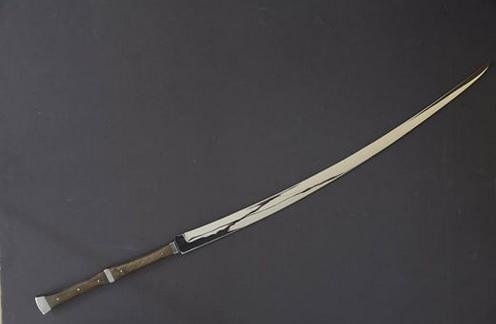While the trial is going on, we finally excavated a new room. It looked even worse than the one we were working in now; it looks like a warehouse of weapons, armor and clothing, and it’s all piled up in such a terrible mess that it will take a lot of time to sort it out.
However, we found something interesting. Rompheus (see attached image as an example) with inscriptions on both sides of the blade. They are made in a typical Glinnar technique: a composition that glows in the hands of the owner (and not only if you know a couple of correct spells).
On one side, the inscription is completely clear and written in Srednestur script (see another image, inscription on the right): rāh-nimāy, which could mean “guide” if such a word existed in Retzin. On the other hand, we had to rack our brains a little until we finally realized that this was ancient cuneiform (!), stylized as Glinnar (!) writing. The following is written:
𐎼𐎠𐎰𐎴𐎡𐎶𐎠𐎹
ra-a-θa-na-i-ma-a-ya,
which reads as rāθanimāya, again a “guide”, but in ancient Turkish (see image, inscription on the left).
Judging by the fact that the name of the sword (and we suspect that this is it) is written in Stursky, and the objects in this entire repository are associated with a certain circle of people, we can be almost sure that the sword belonged to the author of those rubai that I so I translate with a creak.

from all the ends of the earth

